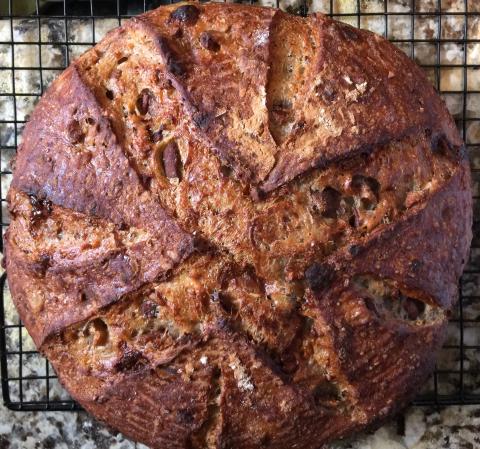
Pane di Matera vs Altamura
Hi bakers..
I've been away for a while and back home. I've had the good fortune of spending many weeks traveling through Italy this summer. One place on my bucket list was Altamura for the bread. I wanted to try the authentic big loaves we know as Pane di Altamura (not to be confused on this board with Alfonsomura!), as I had never tried this type of bread.
I was in Matera, about an hour away from Altamura, sight seeing the city and Sasi (caves, long story, google). We were in Matera for our first full day and the next morning we were going to detour to Altamura and find a bakery and try the bread. As I'm walking along the main square in Matera that afternoon, I see a jumbo sized loaf of bread that looks like the classic Pane di Altamura. So I walk in and there's a wall of fresh loaves in different sizes. As I talk to baker behind the counter he essentially tells me that they too make bread from 'rimacinata' flour from fields just down the road - I end up buying a kilo of flour from him and bring it home to try, labeled as from Matera.
He goes on to tell me, after I ask if they copy the Altamura bread style that in fact it's Altamura that copies their bread style! (classic). And he says in fact that their bread is better!. You have to love the competition! I ended up buying a small loaf him that he slices. A few minutes later I'm sitting on some church steps (it's italy after all) eating his bread.

Suffice it to say, it was a wow moment. Interesting flavour and mouth feel, earthy yet sweet. It was dry, but not in a way that I'd complain about - not sure how to describe it. But truly great bread. I'm sure the entire experience is influenced by my sitting in the shade of a church, overlooking an Italian piazza, surrounded by my family, munching on ridiculously good bread. It's now been too many weeks for me to be exact about how it tasted. But it is a great memory. We never made it to Altamura in the end, but that was fine with me after that experience. I put the flour in my freezer when I got home and this fall I'll try my hand at making a loaf with it.
In the bigger picture, we had some incredible bread and pizza along our travels. I couldn't begin to tell you how good they all were. But of the other experiences, one that stood out was olive bread braids that I had up on the Dolomite Mountains at this small restaurant. I didn't have my camera with me, but they were truly great. It was simple, flavourful and memorable. I'll have to try recreating them too.
Ok. Back to reality and baking bread.. bake happy.. bread1965














